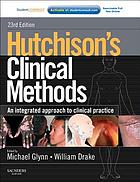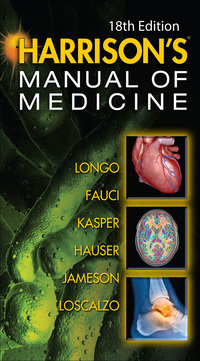Reviewer: Silvana Pannain, MD (University of Chicago Medical Center)
Description: This collection of chapters composed by over 40 contributing authors describes the physiology of energy homeostasis and body weight control, the pathophysiology of obesity, and the management of the obese patient in clinical practice. The book satisfies the need for both a comprehensive resource for researchers and a concise and pragmatic guideline for physicians.
Purpose: The intent was to assemble in a single book an up-to-date review of obesity-related topics, from recent scientific advances in obesity research to current treatment issues and strategies. The book is unique since the authors are not only experts in the field, but also clinicians who are able to translate the current knowledge into clinical practice. Therefore, it is a comprehensive reference for both researchers interested in the physiology of body weight control and pathophysiology of obesity and the breakthrough research (described in Part 1) and for practicing clinicians who have taken on the difficult task of the clinical management of the obese patient (discussed in Part 2). These are important objectives in light of the expanding obesity epidemic and the need for more researchers and physicians involved in its understanding and management.
Audience: The authors state that the intended audience includes all healthcare providers managing patients with weight problems. I would add that it is also suitable for students and researchers looking for a comprehensive review of the physiology of energy homeostasis and appetite control and the pathophysiology of obesity.
Features: Part 1 thoroughly covers the new discoveries in the mechanisms that control food intake, energy expenditure, and peripheral nutrient metabolism. It reviews among others the neuroregulation of appetite, the role of gut peptides as peripheral signals to the brain, and the role of adipokines, peripheral nutrients, insulin, and “ectopic fat” in obesity-related metabolic deregulation. Part 2 summarizes a well rounded variety of topics related to the management of obesity, including the socioeconomic aspects of obesity, the office assessment of the obese patient and the patient with polycystic ovary syndrome, the main dietary approaches, and the role of physical activity in weight management. Because each chapter is thoroughly written and referenced, this book also serves as an excellent starting point for students, researchers, and practitioners who need a guide to the primary published literature. Also, the practical chapter dedicated to the assessment of the obese patient is a useful resource for practitioners who have taken a step further in their everyday practice and are now engaged in a more active and systematic role in evaluating and treating the patient with a weight problem.
Assessment: This is unique among reviews on obesity management in that it covers a number of different areas, and does so in a thorough and streamlined way. It is easy to navigate and to retrieve information. Because each chapter functions independently, I would recommend this book to a large audience that includes researchers, trainees in nutrition, students, and practitioners. Given that the obesity epidemic represents one of the most significant threats to the health of our nation, this broad and diverse review is merited and should stimulate and engage researchers and clinicians who have undertaken the challenge of understanding and managing obesity. I’m not aware of any other book which covers in such a comprehensive manner the current knowledge of obesity and the patient with a weight problem.
by
Robert F. KushnerRobert F. Kushner
This is a timely and informative updated volume for all health care providers challenged with helping patients manage weight. Similar to the well-reviewed first edition, Treatment of the Obese Patient, Second Edition is directed toward individuals who wish to read further about targeted topics, rather than find an introduction to the field. This second edition again provides insights into recent scientific advances in obesity research and provides the most up-to-date instruction about current treatment issues and strategies for both adults and children.
An essential, practical text that sorts, synthesizes, and interprets the latest information on obesity-related topics, Treatment of the Obese Patient, Second Edition, is an essential resource for clinical endocrinologists and other health care providers across a broad spectrum of specialties.
Editorial Reviews
$(document).on(‘googleAdsenseAdsLoaded’, function(){
var csaBodyClass = ‘pdpPage’ || document.getElementsByTagName(“BODY”)[0].className,
csaBreadcrumb = csaAdQuery = ”,
csaProductName = ‘Treatment of the Obese Patient’ || ‘Treatment of the Obese Patient’,
clientId = ‘partner-barnesandnoble_js’,
adWidth = ‘189px’;
if(csaBodyClass == ‘landingPage’) {
// If breadcrumb not in digitalData, then get from url
if(typeof s_setP != ‘undefined’) {
// Get breadcrumb from pageName property since it is the
// string format of breadcrumb, which is in an array
csaBreadcrumb = digitalData.page.pageInfo.pageName.replace(‘b’,”).trim();
} else {
var csaUrl = window.location.href,
slashBIndex = csaUrl.indexOf(‘/b/’)
underscoreIndex = csaUrl.indexOf(‘/_’);
csaBreadcrumb = csaUrl.slice(slashBIndex, underscoreIndex).replace(‘/b/’,”).trim();
}
}
// Double check the bodyClass from header-javascript variable
if(csaBodyClass.indexOf(‘searchResultsPage’) >= 0 || csaBodyClass == ‘landingPage searchResultsPage’) {
csaBodyClass = ‘searchResultsPage’;
}
switch (csaBodyClass) {
case ‘landingPage’:
var csaAdQuery = csaBreadcrumb;
break;
case ‘searchResultsPage’:
var csaAdQuery = ”;
break;
case ‘pdpPage’:
var csaAdQuery = csaProductName,
clientId = ‘partner-barnesandnoble-pdp’,
adWidth = ‘300px’;
break;
default:
break;
}
// Call google ads
if(csaAdQuery) {
var csaPageOptions = {
‘pubId’: clientId,
‘query’: csaAdQuery,
‘hl’: ‘en’,
‘adPage’: 1
};
var adblock1 = {
‘container’: ‘adcontainer1’,
‘width’: adWidth
};
_googCsa(‘ads’, csaPageOptions, adblock1);
setTimeout(function(){
if($(‘#adcontainer1 iframe’).length > 0) {
$(‘#adcontainer1 iframe’).attr(‘title’, ‘Advertising’);
}
}, 5000);
}
})
Product Details
- ISBN-13:
- 9781493912025
- Publisher:
- Springer New York
- Publication date:
- 08/31/2014
- Edition description:
- 2nd ed. 2014
- Pages:
- 336
- Product dimensions:
- 7.00(w) x 10.00(h) x 0.81(d)
Meet the Author
Product Details
| ISBN-13: | 9781493912025 | |
| Publisher: | Springer New York | |
| Publication date: | 08/31/2014 | |
| Edition description: | 2nd ed. 2014 | |
| Pages: | 336 | |
| Product dimensions: | 7.00(w) x 10.00(h) x 0.81(d) |










Reviews
There are no reviews yet.